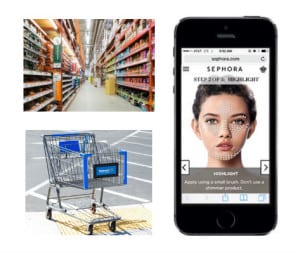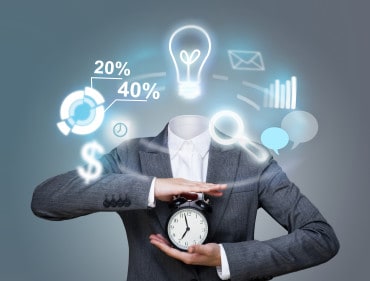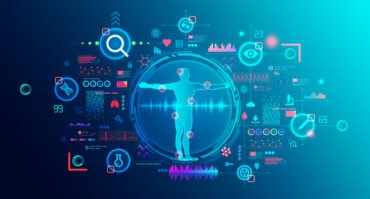
How beacons, mobile apps, and analytics can drive sales, engage customers, and optimize inventory.
What comes to your mind when you think of McDonald’s? The Golden Arches? The iconic image of Ronald McDonald? Maybe burgers and fries?
How about cutting-edge innovation with the Internet of Things?
Over the past decade, McDonald’s has remained ahead of its rivals by embracing technology. The chain was the first in the industry to accept payment via Google Wallet and was also a pioneer in using cloud computing and remote management to cut costs. But their most dynamic innovation is taking place in three unlikely locations spread across the globe.
Japan, The Netherlands and Sweden together account for 12 percent of McDonald’s global revenue. Last year, they were chosen for a unique experiment in user engagement. A blend of Internet of Things (IoT) devices and contextual promotions have allowed restaurant operator to tailor its mobile app offers and advertising to information such as location, weather, purchase habits, and response to promotions. For example, if someone is moving quickly on a hot summer day, the app — which runs on a Vmob contextual analytics platform — shows an offer for a soda at a nearby drive-through. So far, the experiment has proven a rousing success – customers using the app return to restaurants twice as often and spend around 50 percent more. Redemptions for in-app offers have meanwhile increased by 700 percent.
The IoT is by design meant to increase supply-chain efficiencies. Indeed, Kevin Ashton, when he was developing the concept of IoT at MIT in the late 1990s, remarked that “If we had computers that knew everything there was to know about things – using data they gathered without any help from us – we would be able to track and count everything and greatly reduce waste, loss and cost.”
For retailers, using the IoT for marketing and sales comes down to creating meaningful experiences in order to increase loyalty and customer engagement. Primarily, there are three dimensions where IoT can aid retailers in creating brand interactions that have a noticeable impact on their bottom-line.
1. Facilitate and reward

Sephora’s use of IoT is based on facilitating customer brand transactions. Sephora’s technology eases the customer into buying Sephora products and keeps them coming back for more.
Sometimes it is necessary to reward customer loyalty as well, and the world’s most popular coffee house is doing just that using remote sensors.
Starbucks is to Seattle what Microsoft is to Redmond – an intangible part of life. That is exactly the reason why the coffee chain chose to launch a number of remote beacons in its Seattle establishments. For customers with the Starbucks app, the beacons push notifications on the freshest brews and personalized promotions. The idea is to transition the casual customer to premium blends that are offered at Starbucks.
The idea is not just innovative but effective too, as 6 million mobile promotion redemptions occur at Starbucks every week.
2. Information and service
Facilitating customer transactions and rewarding brand interactions is an effective way of increasing customer loyalty. But once you have the customer walking in through the door, you need find the best way to sell to them. That’s where the second dimension of IoT for retailers comes in.
Walk into any Home Depot outlet and it’s like you are in Cheers. The staff knows your name. They know what you are looking for and suggest products that are in your price range. They even ask you friendly questions like how did your roofing project go over the weekend? Behind such unprecedented levels of personalization lies an integration of Home Depot’s customer loyalty program with its in-store and mobile experiences.
Home Depot is leveraging IoT to increase customer engagement on the second dimension — providing personalized service and information to their customers to help them in their decision making process. Their mobile app allows shoppers to locate inventory, comparison shop, ask experts about projects, and see how products would look in their homes. Once inside the store, the app can guide them through aisles to find the products.
A report by Forrester Research in 2015 showed that 83 percent of businesses are looking to implement the IoT for customer engagement. The report further added that digital insights are the new drivers of business decisions, and companies that build systems that leverage these insights will operate more effectively.
Retailers understand that exceptional customer experiences results in greater loyalty in this new age of unrestricted access to market information where customers can easily switch to rivals. Here, the contextual information that IoT provides retailers brings about a massive change. Imagine being able to tailor an in-store experience to minutiae such as the consumer behavior during a certain weather pattern, time of day, or being present not just at the customer’s call but before they even know that they need to make a call. IoT is making this a reality for retailers such as Home Depot.
3. Inventory Control and Supply Chain

Walmart also uses IoT in a novel manner — they make decisions on what kind of inventory to stock. A fundamental principle of the retail business is to have fast-moving products — ones that sell quickly. How? The answer lies in understanding consumer behavior — when and why certain customers make purchases.
Recently, retailers have used predictive analytics and Big Data to make such decisions. But what happens when you have perishable products such as groceries? In this case, something faster is needed to make predictions about consumer behavior. For Walmart, that something is the IoT. The retail giant uses trends mined from social media and juxtaposes them against prevailing weather patterns, time of day, and demographic information about its customers gathered at point of sale. All of this information is analyzed to predict sales of groceries. For example, sales of salads will rise when temperatures are above 80 and light winds are around. This allows Walmart to keep their inventory costs low.
The Internet of Things has exciting propositions for retailers. Interactive touch-screens, contextual advertising, geo-targeted promotions, personalized in-store environments, and augmented reality are just the beginning.
However, it is important to remember that the value of IoT does not lie in technological advances but instead in improving and creating immersive customer experiences. IoT is a means to an end.
Related:
VMob on personalized marketing with the IoT
Real-time retail: why Uniqlo employees use handhelds
Want more? Check out our most-read content:
Intelligent Business Operations: White Paper
7 Essential Elements in a Real-Time Streaming Analytics Platform
Fog Computing: A Reference Architecture
Why Edge Computing Is Here to Stay: Five Use Cases
A Business Intelligence Strategy for Real-Time Analytics
Why IoT Edge Computing Is Crucial
Liked this article? Share it with your colleagues!
































